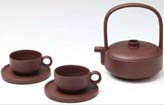Chinese Way
Reputations hard to make, easy to break
Updated: 2011-08-25 07:44
(China Daily)
Q+A | Chi Jo-hsin
Editor's note: Chi Jo-hsin, chief curator of the Department of Registration and Conservation, and the Department of Security, at Taipei Palace Museum.
How important is it to protect the image of the museum?
Building the image is really difficult but destroying it is very easy. However, the reason we do our work properly is not for the sake of image, but to protect the relics. If the treasures are well maintained, then naturally we have a good reputation and image.
What are the difficulties of running such a huge and important museum?
There are three main elements. The museum should be well equipped, have clear regulations and use the "right" people, which is the most difficult part. The Taipei Palace Museum has around 20 working rules, strictly regulating how the facilities should be used, how the maintenance should be done and more. But checking whether an employee really follows these rules is the most challenging part.
First of all, we adopt a strict hiring process and examine the qualifications of job applicants. After they are employed, they receive training to make sure they are capable of doing the work. But that doesn't mean their supervisors can relax. Laziness is a natural instinct. Chiefs must supervise their subordinates at all times to ensure they follow regulations.
Then we train them to have a sense of responsibility, a passion for the treasures and a sense of mission. They are not taking care of the relics just for themselves, but for our future generations. They should feel it is a great honor to pass on the treasures intact.
We can't say the Taipei Palace Museum has the best facilities, regulations and people. But we do our best and immediately improve once problems are found. Then the probability of having accidents is greatly reduced.
How are the museum's treasures protected and displayed?
We have numerous facilities and equipment to check and examine the relics, such as theft-proof and fireproof facilities and those that maintain constant temperatures and humidity in exhibition rooms and storehouses. Other important measures include checking whether the surfaces used to display articles are stable, and whether the surrounding environment is well protected. There are various ways to protect our treasures. These are routines but what is important, as I previously mentioned, is whether our people strictly implement operational regulations.
What is your view regarding the recent series of negative news about Beijing's Palace Museum?
It does serve as an important lesson for us, in that we have to supervise our employees even more. In the past, we just told them what we should and should not do. But now there are real, living examples right in front of us. So I have been telling our young staff members that we have similar facilities to the Palace Museum in Beijing, but we need to constantly examine whether there are flaws and make immediate corrections. It is not just those on the first line who should be on alert, their chiefs cannot shirk the responsibility. Reducing humor error is critical.
The Taipei Palace Museum and Palace Museum split in two in 1948 due to the civil war.

Specials

Biden Visits China
US Vice-President Joe Biden visits China August 17-22.

Star journalist leaves legacy
Li Xing, China Daily's assistant editor-in-chief and veteran columnist, died of a cerebral hemorrhage on Aug 7 in Washington DC, US.

Hot pots
Tea-making treasures catch the fancy of connoisseurs as record prices brew up interest